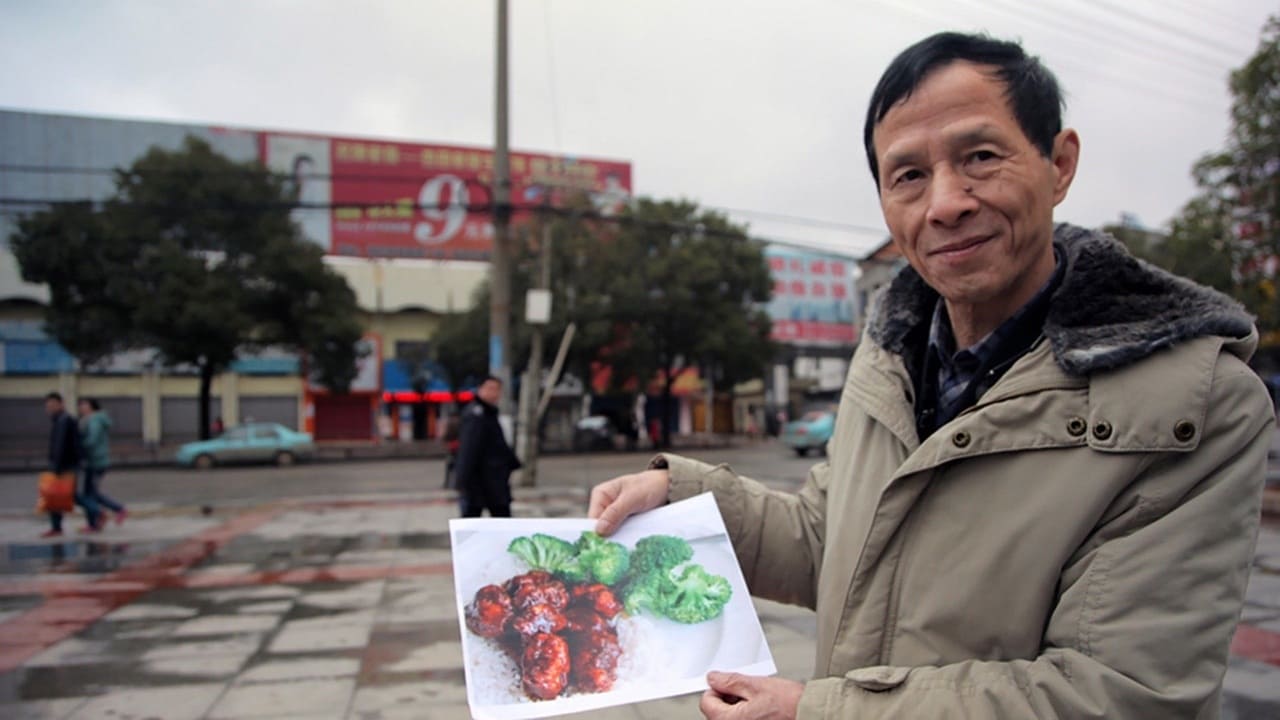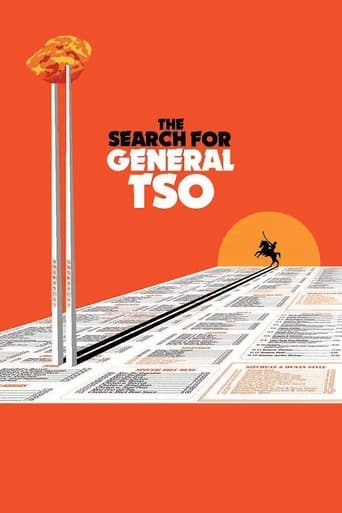

Better read the Wikipedia page. It has all the information in a shorter form. As the whole documentary is about 5 minutes long. The rest is fluff. With relevant testimonies that are probably supposed to enhance the archaeological abilities of a lazy, yet greedy production team. The testimonies are as relevant as "I remember I've just got off the Grayhound and was attracted by the neon sign and surely I was eating chop su..." What? Yea, even the food reference is about something else! And what has the prejudice has anything to do with the food? Was it originally made with urine?Contact me with Questions, Comments or Suggestions ryitfork @ bitmail.ch
... View MoreThe film "The search of General Tso" is a documentary about the origins of General Tso Chicken. The reason for finding the origin General Tso Chicken is because most people in China do not know about the dish. The main target audience of the film would just be people who know someone that owns a Chinese restaurant or people who ate Chinese food before. It is also rarely on the menus of restaurants in China. To find how it started we have to go all the way back to the Californian gold rush when the Chinese first came to America in 1849. The film did a good job by gathering Chinese Historians from different universities around the U.S. They were able to add background information of when the Chinese came over and the discrimination they faced. It was helpful to give background so it can lead up to why the Chinese needed to adapt to the eventual creation of General Tso Chicken. They also visited General Tso's home to confirm that he has no relation to the dish. One of the most important things to note in a film is if you enjoyed it. If your engaged it must mean you enjoyed it to a certain extent. One of the good qualities of the documentary was their use of quick- cuts. The use of quick cuts increases the pace at which the film is going. If the pace is going faster, it is easier to stay engaged. If the pace is too slow it is very easy for the viewer to get bored and lost attention to the film. Fast-cuts can ease the boredom by having the scenes of silences. I make note of the fast-cuts and why I enjoyed it because there are some documentaries where the speaker speaks in a slow pace and the scenes have very slow transitions. The pace of the fast-cuts was not that fast but at a decent pace so it does not feel like they are just shoving information in your face. They were able to manipulate this skill very well to where it made me forget the time. It also keeps your attention by how they set up the question of the film and the viewer does not find out the answer until the very end. The film could have ended in 20 minutes but they made it longer but including more history of the other dishes before the creation of General Tso Chicken. It was important that they added other food because it influenced other chef to experiment. As it shows in the beginning of Chinese Cuisine adapting to American taste it slowly became more clear on why they made the dish and where it came from. The more information they revealed the more you would be drawn into it. The film was able to have a good end by tying everything together like a bow. You figured out why the Chinese came and why they had to adapt Chinese food to American taste. It kept you drawn in by not telling the viewer where it came from but instead it went through the history of other Chinese dishes that lead up to it. It had a great ethos by having Chinese restaurant owners, Chinese historians, and a relative of General Tso. Overall The film was a great watch and very informative of Chinese cuisine in America.
... View MoreWhy the show chose to talk about General Tso's Chicken instead of Chicken Chow Mein or Chop Suey, I don't know but this documentary starts with discussing the origins of this dish and then becomes a lot of things, such as a discussion of the Chinese immigrants' experiences as well as the Americanization of Chinese food. Most of this comes as no surprise to me and probably won't be for you either, as MOST 'Chinese' food we see in American Chinese restaurants isn't Chinese at all but has been changed to suit American tastes. I've been to Chinese restaurants in the UK where 80% (or more) of the menu looks nothing like those in the States. But despite not being exactly authentic, the film does manage to trace the roots of this dish quite nicely and is a nice homage to the Chinese-American experience. Not earth-shattering in its discoveries but pleasant and informative. I do give the film a 7, however, because the graphics are really nice and help elevate an okay story.
... View MoreFull disclosure - my wife's favorite Asian dish is General Tso's chicken. She always looks at the whole menu but more often than not she ends up ordering this. She has had it at any number of different restaurants over the years, it is always a bit different but always good. So when I came across this documentary on Netflix streaming movies I knew I had to see it. The film seeks to answer the question, "Where did this dish come from?" In the process, with contributions of many historians, chefs, and writers I believe the question was answered but we also get a great review of the history of Chinese in the USA, first lured here by the California gold rush.Chinese food was not always popular in the USA, and to help make it more popular many of the traditional Chinese recipes had to be modified to "Americanize" them. But in 1972 President Nixon made a historic trip to Communist China, and part of that telecast showed him eating Chinese food. That provided the spark that resulted in the boom of Chinese, and in general Asian, food in the USA.General Tso was a genuine 19th century military leader, very successful and well-known in China. There are parks, schools, museums, etc named after him. But the origin of General Tso's chicken was in Taipei when China's leader Deng Xiaoping was to visit, and a famous chef was asked to create something special for him. He came up with a chicken dish that he named General Tso's Chicken, just to play off a famous general from the Hunan Province. It was an immediate success and another Chinese chef borrowed the idea and the name and its first appearance on USA menus was in 1970s New York City. Now it is perhaps the best-known and most frequently ordered Chinese dish anywhere. And the way to prepare it is as varied as are the number of restaurants preparing it.Very good documentary, but only for those who enjoy eating.
... View More